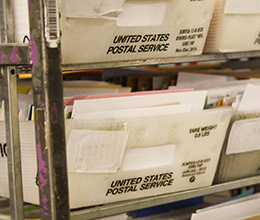
A Processing Plant Round Up
Throughout the year we completed a series of audits on mail operations and delayed mail at eight postal processing facilities across the country. As we conducted our work, we began to see a consistent story. So we thought it would be useful to publish a capping report summarizing our results.
So, what did we find? Plant managers were focused on manually counting the amount of delayed mail at each facility. While that’s good, this type of counting takes time. Last January, when USPS implemented its Mail Condition Visualization (MCV) system, it was supposed to save the Postal Service time and money by using machine-reported scans to track and provide real-time visibility. But it didn’t, because managers are still spending time, and money, counting.
Why aren’t managers relying on the new MCV system? Because the numbers it reports can be misleading. And that, in turn, is a result of mail that isn’t being processed correctly. Sometimes mail is sent to the delivery unit before it receives its last scan. This creates two problems. First, the mail misses its last scan and shows as delayed in the MCV system even though it might not really be. Second, this mail may have to be manually sorted at the delivery unit.
We recommended USPS work with the processing plants to ensure mail receives the last sort and scan before it leaves the facility. Then, plant managers can start using MCV to identify root causes of mail that is truly delayed.
So, take the time to read our capping report and tell us if you find it helpful.

Leave a Comment